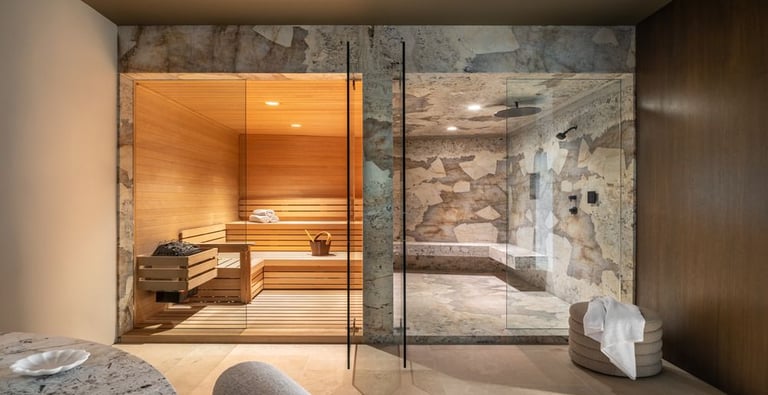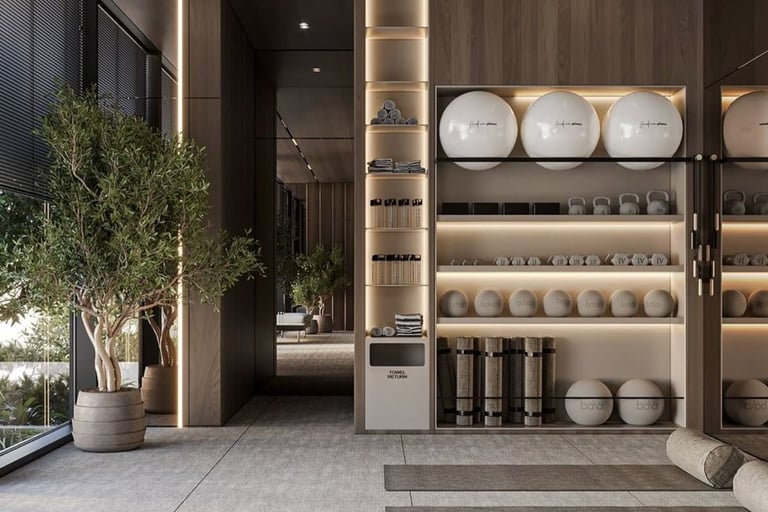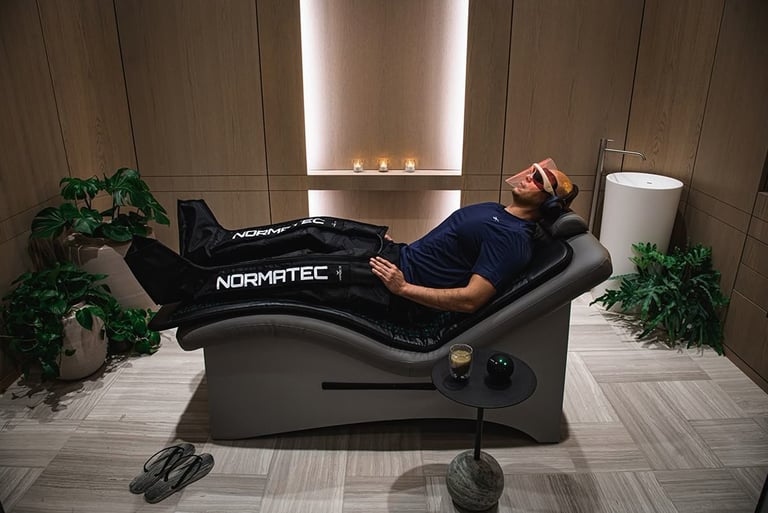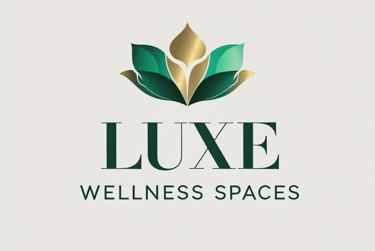The Future-Proof Wellness Room: Flexible by Day, Restorative by Night
A designer’s roadmap to plan a home wellness suite—zoning, plumbing, materials, ventilation, finishes, and tech—without costly rework.
Daryn B
8/18/20253 min read


Create a space that works like a mini wellness resort and still hides away when company comes over. A multi-use wellness room is about smart compromise: flexible fitness space by day, restful recovery zone by night. Think convertible home gym with a Murphy rack that folds away, clever modular storage that keeps equipment out of sight, and intentional lighting and window strategies that cue your body for activity or sleep. Below is a practical, designer-friendly roadmap so your wellness suite ages gracefully with you and avoids costly rework.
Start with clear zones. Even a single 12 by 10 room benefits from mental zoning: an active zone for movement, a calm zone for stretching, and a restorative corner for sleep or meditation. Use rugs, a low storage bench, or a sliding curtain to separate zones without building walls. Zoning lets a convertible home gym coexist with an occasional guest bed or nap nook and simplifies plumbing and electrical planning when you do add a wet element like a steam shower or sink.
Plumbing and ventilation matter early. If you plan a steam shower, wet sink, or even a laundry hookup for towels, route plumbing before finishes go in. Ventilation is not glamorous but it is essential. Install an exhaust fan sized to the room and, where possible, incorporate mechanical ventilation like an ERV to keep humidity and odors in check. Good airflow protects finishes and improves sleep and recovery after workouts.
Choose finishes that can handle sweat, water, and long-term wear. Porcelain tile, sealed engineered wood, or high-quality resilient flooring stand up to equipment and are easy to clean. Go low VOC on paints and sealants to improve air quality. Keep a small towel station in your modular storage and use mesh bins so items dry between uses.
Modular storage is your secret weapon. Stackable cabinets, under-bench drawers, and wall-mounted shelving make it easy to switch from a flexible fitness space to a serene studio. A Murphy rack is perfect for people who want proper strength training without dedicating an entire room to a barbell. These fold-flat racks turn into cabinetry or a sleek panel when not in use. Pair them with foldable benches and wall-mounted squat stands to keep the footprint small.
Lighting is the mood manager. Design lighting for activity and recovery. Bright, cool-toned recessed lights or daylight-tunable fixtures are great for workouts and pilates classes. For evenings, use recovery lighting: warm red or amber low-intensity fixtures, dimmable layers, and lamps that mimic candlelight to help your body wind down. Integrate circadian cues into your lighting controls so lights automatically shift warmer and dimmer as evening approaches, encouraging natural melatonin release.
Control blue light and implement blackout strategies for true restorative sleep. For screens and smart mirrors, enable blue-light filters in the evening or use physical blue-light glass. Install blackout curtains or cellular shades on windows facing street lights—complete darkness helps the brain recognize night. Fun fact: even small amounts of artificial light can suppress sleep hormones, so treating windows and screens seriously pay dividends for rest.
Tech should be helpful, not intrusive. Automate ventilation, lighting, and sound with scenes like Work Out, Wind Down, and Sleep. Use voice control or a simple wall keypad so older users can operate everything easily. For aging in place wellness, plan wider clearances, non-slip floors, lever handles, and a reachable shower bench. Low thresholds, well-lit pathways, and thoughtful storage heights make the room usable at every life stage.
Recovery tools deserve their own small storage spot: massage guns, foam rollers, compression boots, and a hydration station. Acoustic panels or heavy curtains will reduce echo—useful for guided meditation or online classes—and also add insulation and visual warmth.


Budget for future changes. Run extra conduit for lighting and AV, leave space on a wall for an eventual Murphy rack or fold-down bike, and choose finishes that tolerate a change of use. This saves time and money later and keeps your wellness room genuinely future-proof.
A final fun fact to leave you with: creating a single space that supports movement, sleep, and stress reduction can increase the chances you will use it daily. People who make exercise convenient are far more likely to keep it as a habit. Design with flexibility first and serenity second, and you get both.
At Luxe Wellness Spaces, our spa consultancy services help you harness these trends through optimized wellness design, streamlined operations, enhanced guest experience, and maximized ROI.
Further reading on our blog: 'Top Trends and Opportunities for Spa & Wellness Brands.'






